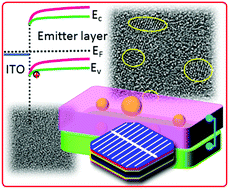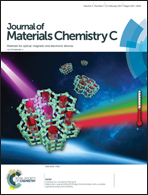Band alignment and enhancement of the interface properties for heterojunction solar cells by employing amorphous–nanocrystalline hierarchical emitter layers†
Abstract
Excellent electrical and passivation properties of p-type emitter layers are extremely important for high efficiency silicon heterojunction (SHJ) solar cells. The emitter layer should be embedded between the transparent conductive oxide (TCO) and the intrinsic amorphous silicon passivation layer, and thus the contact characteristics of p/TCO should also be carefully regulated to achieve better performance. Multifunctional p-type emitter layers combined with hydrogenated amorphous silicon/nanocrystalline silicon thin films were fabricated by the plasma enhanced chemical vapor deposition process, to meet the requirements of high conductivity and shortening of the depletion region between the p layer and TCO. Also, the p-a-Si:H film of the hybrid structure can serve as a buffer-layer to compensate the p/i band offset and a protective-layer for the intrinsic passivation films. Finally, applying this hybrid film as an emitter layer for SHJ solar cells based on low-cost commercial Cz silicon wafers, a conversion efficiency improvement of 2.6% in the solar cell photovoltaic performance has been achieved.



 Please wait while we load your content...
Please wait while we load your content...